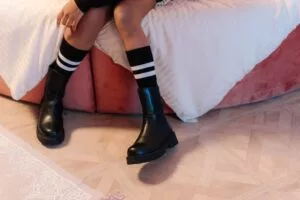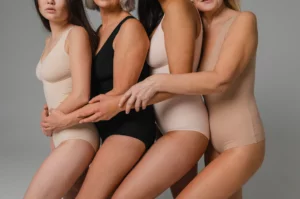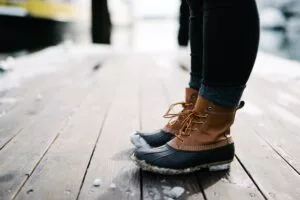
How to Convert Your Shoe Size from Women to Men or Men to Women
How to Convert your Shoe Size: Women’s to Men’s or Men’s to Women’s
When it comes to finding the best shoes for your size, it can be a daunting task. Especially when it comes to brands or pairs you really love that come in men’s sizes when you typically wear women’s, or vice versa. We all know how complicated it can be trying to find that perfect fit since shoes, sneakers, sandals, and other footwear all fit differently depending on size, shape, and brand.
The biggest question is what does it mean when companies sell shoes in women’s, men’s, and unisex? Is the sizing the same? What are the measurement differences, and do I need to know my measurements in each sizing? If you especially like to order shoes online, it can be a daunting task when you’re not quite sure what the significance can be between them.
Before you decide to put your best foot forward in getting new shoes, take a look at our guide below that will help you better understand what works. Do keep in mind that shoe size conversions are a guide, but aren’t always perfectly accurate, as every brand and shoe style/width vary.
Why should I know shoe conversions?
Knowing your shoe conversions and shoe companion sizes can be incredibly helpful, especially when shopping online. Some brands won’t have the shoe you want in your preferred size preference but may have it available in its ‘sister size’ – men’s or women’s, or even unisex.
It’s also important to keep in mind when you’re looking for more ‘hardy’ boots, such as hiking or winter boots. Women’s boots and men’s winter boots are typically built differently. Small differences that you otherwise wouldn’t consider, can lead to irritating issues when it comes to comfort and wear. Men’s boots and shoes may be wider widths than the women’s sizes/styles or too big even if the sizes match up – always go by the measurements if you can do so.
Why do shoe sizes vary so often and what you should look out for
The way shoes are made starts with a form called a “last”, which will determine the shape and size of the final shoes. All lasts have different shapes, which lead to shoes being different sizes and styles through brands and shoemakers have hundreds of lasts, depending on the sizes and widths available.
Some brands will essentially shrink down their men’s size lasts to create the women’s size ones, other brands will design separate lasts for them, with Lululemon being an example of this – their Blissful running shoe design is more styled towards common to female feet issues. Finding what style works best for your feet in terms of width, pointier toes, rounded toe styles, and more will impact how shoes fit onto your feet. Trial and error is typically the best way to understand what works best for you.
Women’s shoe sizes to men’s shoe size conversions
To go from women’s sizes to men’s shoe size conversions, typically you can decrease it by 1.5 or 2 sizes. For example, if you have a men’s size 4, it will equal a women’s size 6 or 6.5. It’s also important to keep width in mind and try out shoes when you can, as the width for men’s shoes tends to run on the wider side than it does for women’s. It is advised to try 1.5 size difference going from women’s to men’s, to make up for the width difference that may give a better fit.
Especially when it comes to types of shoes, boots, sandals, etc. we all have several different types that may be in different sizes. Sneakers may be a 6.5 or a 7, sandals may be a 5, boots might be a 7. It becomes even more complicated when we have to switch to gendered sizing, since depending on the brand, the ‘lasts’ made for the style of shoe may just be sized up or down for men’s/women’s sizes with the form itself staying relatively similar – or it may be entirely different between the genders. Women’s can tend to be slimmer and less wide.
For women’s to men’s shoe sizes – Generally try sizing DOWN 1.5 or 2 sizes. A size 8 in women’s would be a men’s 6.5, give or take, depending on the brand and style of the shoe.
Men’s shoe size conversions to women’s
As stated in the previous section, men’s to women’s sizing is approximately the same – just reversed. If you typically wear men’s shoes, if you size up by 1.5 to 2, it should be around the same size as what you’re used to – with the caveat that women’s shoes tend to run with a narrow width. For example, a men’s size 7 would be a women’s size 8.5 or 9.
If you need a wider shoe, it might benefit you to try 2 sizes up. If you wear a men’s size 7, try a women’s 9 if you have wide feet. Of course, this is all based on general sizing and not any specific brands and all of the varying factors that go into that as well.
Especially when it comes to winter boots or something similar in that nature, they tend to be wider and more ‘robust’ as boots – when sizing from men’s to women’s, keep this in mind, as they may be too small even if the sizing looks like it should fit. There is also lining that will reduce the size of the boot all around. When sizing between lined boots, check that the dimensions will fit not only the feet, but the calf area comfortably.
For men’s to women’s shoe sizing – Generally measure UP by 1.5 or 2 sizes. A size 8 in men’s would be a women’s size 9.5, depending on the style of the shoe and the branding.
Shoe size conversion chart: Women’s to Men’s or Men’s to Women’s
Our quick chart below shows the size differences between men’s and women’s shoe sizes for reference:
| Women’s sizes | 7 | 7.5 | 8 | 8.5 | 9 | 9.5 | 10 | 10.5 | 11 |
| Men’s sizes | 5.5 | 6 | 6.5 | 7 | 7.5 | 8 | 8.5 | 9 | 9.5 |
Read more

SKIMS vs Spanx: How They work, Pros and Cons, and More
Shapewear compresses and smooths curves, reduces size and creates a sleek silhouette. We compared two leading brands.

The Best Men’s Winter Boots in Canada
Boots to keep your toes warm even in a Canadian winter.

The Best Winter Boots for Women in Canada
There is no place in Canada where winter boots would be of no use.

The Best Down Vests in Canada
The down vests in this guide will help keep you warm all year long.